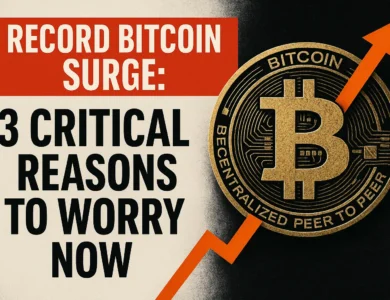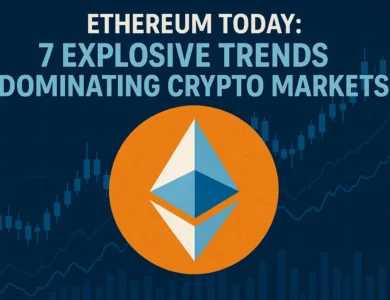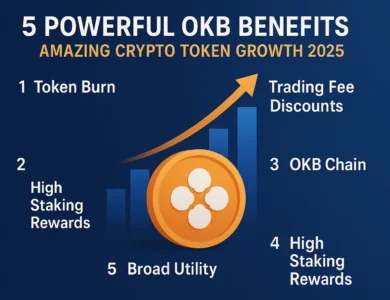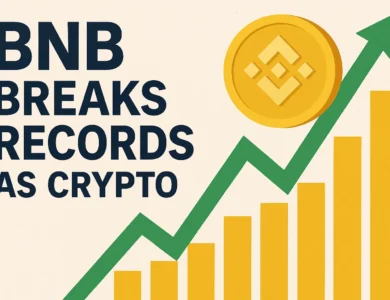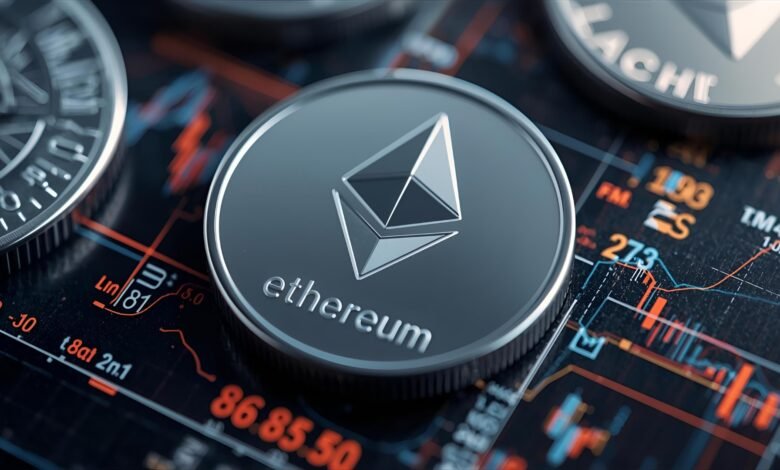
Ethereum price forecast commentary has rarely been more contested. After a choppy October, ETH-USD is stabilizing near $3,800, a level that has repeatedly attracted dip buyers even as macro jitters pressure risk assets. At the same time, U.S.-listed spot Ethereum ETFs—live since mid-2024—have reshaped access to ETH, creating a new demand channel that many believe could set the stage for another leg higher toward $4,800.
Recent headlines show how sensitive crypto remains to global headlines and liquidity. Yet, Ethereum’s structural story—proof-of-stake economics, the Dencun (EIP-4844) upgrade that turbocharged Layer-2 scaling, and a steadily maturing on-chain economy—continues to underpin medium-term optimism. As of October 17, 2025, multiple price dashboards showed ETH trading in the high-$3,700s to low-$3,800s intraday, reflecting a market that’s consolidating after sharp swings earlier in the month.
Why ETH-USD Is Steadying Around $3,800
Macro turbulence meets structural crypto demand
October has been volatile across risk assets, with geopolitical tensions and trade headlines whipsawing sentiment and spilling into digital assets. Reports throughout October documented swift, correlated pullbacks across crypto, including ether. Yet amid the chop, ETH keeps finding support just below $4,000 as buyers lean on long-term narratives: the ETF access story, post-Merge issuance dynamics, and improving user experience on Layer-2. Recent market wraps from mainstream financial outlets reported synchronized drops in both bitcoin and ether as macro stress rose; importantly, these drawdowns have not broken Ethereum’s higher-low structure on multi-month charts.
ETF access has permanently widened the funnel
Spot Ethereum ETFs in the U.S. launched in July 2024, lowering operational barriers for institutions and advisors to gain ETH exposure within traditional brokerage accounts. Multiple issuers, including marquee asset managers, received the green light to list products on major exchanges. While flows ebb and flow with risk appetite, the mere availability of these vehicles keeps a consistent bid in the market. It provides a conduit for incremental adoption during windows of macro calm.
Post-Merge token economics and Dencun scaling
Ethereum’s post-Merge issuance model means a balance between staking issuance and fee burning governs the network’s net supply growth. In periods of high activity, EIP-1559’s burn can significantly offset issuance; during quieter stretches, net supply can drift higher modestly. Either way, ETH’s monetary profile is now structurally leaner than in the pre-Merge era. Pair that with the Dencun (EIP-4844) upgrade—introducing “blob” data that dramatically reduced Layer-2 costs and improved throughput—and you have a network that is cheaper and faster for everyday users, which can feed back into activity and, by extension, demand for ETH as blockspace collateral and settlement fuel.
The Bullish Path: Why $4,800 Is Back on the Table
ETF flows as a reflexive demand engine
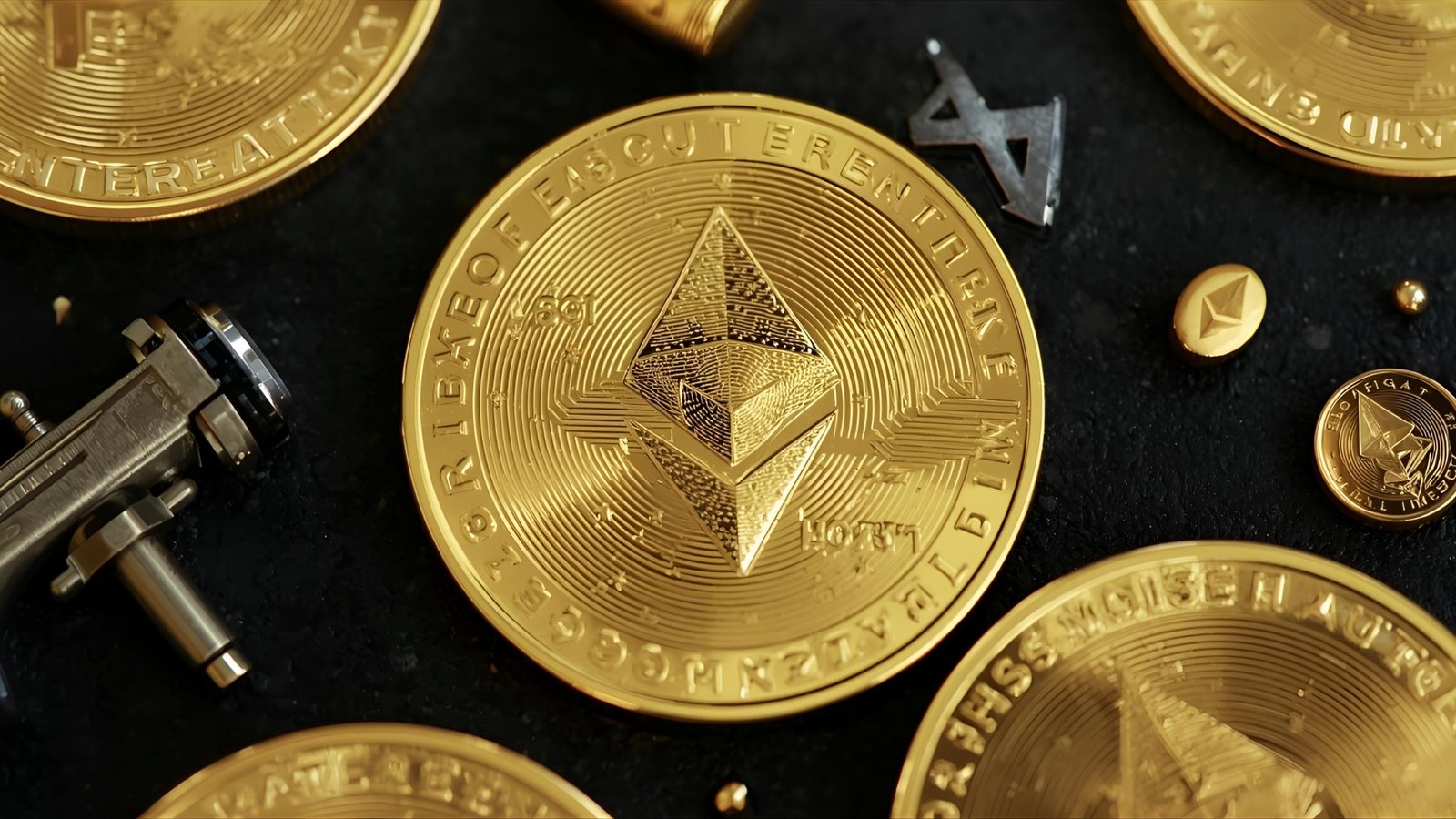
When volatility cools, even modest ETF inflows can act as a catalyst. Advisors rebalancing client portfolios into diversified crypto exposure don’t necessarily need to learn wallets or custody; they can allocate via tickers they already understand. Over time, these steady allocations can accumulate—particularly if macro rates stabilize and risk assets rally. The interplay between reduced operational friction and brand-name issuers helps normalize ETH as an investable asset in compliant portfolios.
Network fundamentals that compound
Two pillars strengthen the Ethereum price forecast over a multi-quarter horizon:
-
Cheaper L2 transactions via Dencun. By introducing proto-danksharding and “blobs,” Ethereum slashed the data costs paid by rollups. That lowers end-user fees on L2s for DeFi, gaming, NFTs, and real-world asset rails—activities that ultimately settle back on Ethereum. The more affordable the experience, the greater the potential user base and transaction count.
-
Lean issuance dynamics. Post-Merge, issuance is no longer block-reward-heavy. ETH’s net supply path is activity-dependent and, at times, deflationary when burnoutpaces issuance. That gives ETH a compelling “scarcity-when-active” narrative that resonates with both crypto-native investors and macro allocators seeking assets with disciplined supply frameworks.
Technical structure favors a controlled reset before trend resumption
From a charting perspective, ETH’s pattern since late summer resembles a broad, grinding uptrend punctuated by sharp macro-driven pullbacks. The recent defense of the high-$3,700s suggests buyers are prepared to absorb supply above prior breakout zones. With momentum indicators resetting and spot liquidity deepening thanks to ETFs, ETH retains the potential to challenge August highs and, if reclaimed, extend toward the psychologically potent $4,800 area where prior sellers emerged.
The Bear Case: What Could Stall or Reverse the Move
Macro remains the wild card
Investors cannot ignore the reality that ETH-USD trades within a global liquidity matrix. Renewed trade tensions, banking-sector scares, or hawkish policy surprises can sap risk appetite. Recent coverage tied crypto drawdowns to flare-ups in U.S.–China trade measures and wider market unease, underscoring that macro shocks can temporarily overwhelm crypto-native tailwinds.
ETF outflows and positioning washouts
The same ETF rails that enable convenient inflows also permit rapid de-risking if sentiment sours. A stretch of outflows, whether due to macro anxiety or rotation within crypto, can cap rallies and force price discovery lower as systematic strategies delever. Short-term volatility around key CPI prints, policy meetings, or geopolitical headlines can push ETH back toward support zones, testing the conviction of new entrants.
Activity-sensitive supply dynamics
ETH’s net supply trend hinges on usage. When on-chain activity softens and the burn slows, issuance can outweigh burn at the margin. While still far leaner than pre-Merge, this cooling effect can blunt the scarcity narrative in quiet markets and keep price contained until usage reaccelerates. Official documentation lays out how issuance and burn interplay to determine inflation or deflation across cycles.
Scenario Analysis: Base, Bull, and Bear
Base Case: Range build then breakout
In the base case, ETH-USD oscillates between roughly $3,600 and $4,300 as macro noise fades and ETF flows stabilize. Layer-2 ecosystems continue onboarding users attracted to lower fees post-Dencun, gradually boosting fees and burn on busy days. As confidence rebuilds, ETH challenges summer highs and grinds toward $4,800 into a more supportive risk backdrop. The pace is uneven, but higher lows persist.
Bull Case: Momentum + flows + activity spike
A benign macro window, improving liquidity, and renewed ETF inflows could ignite a trend acceleration. If ETH clears resistance convincingly and on-chain activity spikes across DeFi and tokenized assets, the burn-to-issuance balance can skew more deflationary, amplifying the move. In this scenario, the Ethereum price could rise to $4,800 faster than consensus expects, with extensions possible if momentum funds pile in and spot-derivatives bases widen.
Bear Case: Macro shock and ETF de-risking
Conversely, a risk-off shock—whether from geopolitics, credit stress, or stubborn inflation—could pull ETH back into the low-$3,000s or even test the high-$2,000s on a capitulation wick. ETF outflows would accelerate the slide, while lower network activity would dampen the burn. In this path, price likely reverts to value near multi-month moving averages until volatility compresses and participation returns.
Key Catalysts to Watch
1) ETF net flows and primary-market creations
Monitor net creations and secondary-market premiums/discounts across the central spot ETH ETFs. Sustained creations signal new capital entering. Weekly inflow trends often correlate with price strength as allocators rebalance into crypto alongside equities during calm periods. The ETF approval history and large-scale issuer participation cement this as a durable structural driver.
2) L2 usage, fees, and the post-Dencun user experience
Track transactions per second and average fees on the top Layer-2 networks. If costs remain low and throughput high—thanks to EIP-4844 blob capacity—user funnels for trading, gaming, and payments can widen, lifting aggregate activity and fee burn over time.
3) On-chain revenue and burn vs. issuance
Watch for stretches of elevated gas consumption driven by launches, airdrops, or new protocols. Sustained on-chain engagement can tilt ETH’s supply toward flat or negative net issuance during peak periods, strengthening the long-term investment narrative. Ethereum’s documentation breaks down how these forces interact.
4) Macro calendar and cross-asset correlations
Keep an eye on major macro prints and policy meetings. Crypto’s correlation with high-beta equities and liquidity proxies tends to rise during stress, which can compress multiples across risk assets—even with healthy crypto-native fundamentals. Recent coverage has repeatedly connected ETH pullbacks with broader market tremors.
Technical View: Levels That Matter
Support zones and trend health
In the near term, $3,600–$3,700 remains the first demand pocket, with deeper interest historically surfacing closer to $3,300–$3,400 during risk-off spikes. Holding above these shelves preserves the pattern of higher lows visible since the spring. A decisive break below would warn of a larger distribution phase and likely coincide with ETF outflows and weaker L2 activity.
Resistance and the $4,800 objective
The $4,300–$4,400 band capped multiple rebound attempts in recent weeks. A strong daily close above that region, preferably accompanied by rising spot volume and tightening futures basis, would set the stage to retest the $4,700–$4,800 zone associated with prior supply. Above $4,800, empty air pockets could open up quickly if momentum chasers re-engage.
Fundamental Lens: Why ETH Still Commands a Premium

The settlement asset of modular crypto
Even as activity migrates to rollups, Ethereum’s base layer remains the settlement and security anchor. L2s post data back to Ethereum; protocols denominate collateral in ETH; and staking ties the asset’s value directly to network integrity. This scaffolding gives ETH a unique blend of utility, cash-flow-adjacent burn, and monetary premium that, in combination, supports a higher multiple on incremental demand.
Evolving supply mechanics and investor psychology
Because ETH’s net supply is responsive to activity, it encourages a reflexive cycle: more usage can lead to more burn, tightening the effective float and potentially attracting more capital. During quieter periods, issuance modestly exceeds burn, which is a healthy equilibrium—it keeps blockspace affordable and discourages speculative fee spikes while preserving long-run scarcity during growth cycles. Ethereum’s official materials outline the mechanics cleanly for investors evaluating long-term supply curves.
Risk Factors That Deserve Respect
Regulatory reinterpretation or surveillance momentum
While U.S. spot ETH ETFs now exist, the policy environment can evolve. Renewed scrutiny of staking, DeFi, or exchange market structure could introduce headline risk. Globally, issuers and venues must navigate licensing, disclosure, and market-integrity obligations that may periodically surprise risk markets.
Smart-contract risks and L2 operational dependencies
The same modular design that enhances scalability also increases surface area. Bridges, sequencers, and app-level contracts can fail or be exploited. Ethereum’s architectural direction emphasizes censorship resistance and data availability, but operational hiccups on L2s can still dent activity and sentiment in the short run.
Macro liquidity and the “everything duration” theme
If real yields lurch higher or growth surprises lower, duration-sensitive assets—from tech stocks to crypto—tend to derate. ETH is no exception. October’s headlines were a reminder that even strong Ethereum price forecasts can be deferred by global cross-currents.
Bottom Line: A Credible Path to $4,800, With Patience
Pulling the threads together, ETH-USD consolidating near $3,800 looks like classic base-building after a volatile stretch. The structural drivers—ETF access, Dencun-enabled scaling, and post-Merge issuance economics—support a constructive medium-term trajectory. Clearing the $4,300–$4,400 ceiling on convincing breadth and flow would open the route to a $4,800 retest. Until then, expect choppiness as macro headlines tug on risk appetite. For investors, a disciplined approach—watching ETF creations, L2 throughput, and on-chain burn metrics—offers the cleanest read on when the next leg is ready to run.
FAQs
Q: Is $4,800 realistic for ETH-USD in this cycle?
Yes—provided resistance near $4,300–$4,400 breaks on substantial volume and ETF inflows resume. Post-Dencun cost reductions on L2s and leaner post-Merge issuance strengthen the medium-term setup, but macro volatility can prolong consolidation.
Q: How do spot Ethereum ETFs impact price discovery?
They expand access for advisors and institutions, allowing allocations through familiar brokerage rails. Sustained net creations translate to incremental spot demand, which can lift prices during calm macro periods; conversely, outflows can cap rallies.
Q: What on-chain metrics matter most for this Ethereum price forecast?
Watch L2 transaction counts and fees, gas consumption, and burn vs. issuance. Elevated activity tightens adequate supply and signals healthy demand for blockspace—both supportive for ETH over time.
Q: Why is ETH sometimes weak even when fundamentals look strong?
ETH trades within a global risk complex. Spikes in geopolitical tensions, trade conflicts, or growth scares can drag all risk assets lower—even with improving crypto-native fundamentals.
Q: Is Ethereum still “ultrasound money” after the Merge?
ETH’s supply is activity-dependent. During busy periods, fee burn can offset issuance; during quieter periods, net supply may grow modestly. The crucial point is that issuance is structurally leaner post-Merge than before, aligning ETH’s monetary profile with usage.
Read More: Ethereum eyes $20,000 to overtake Bitcoin cap



